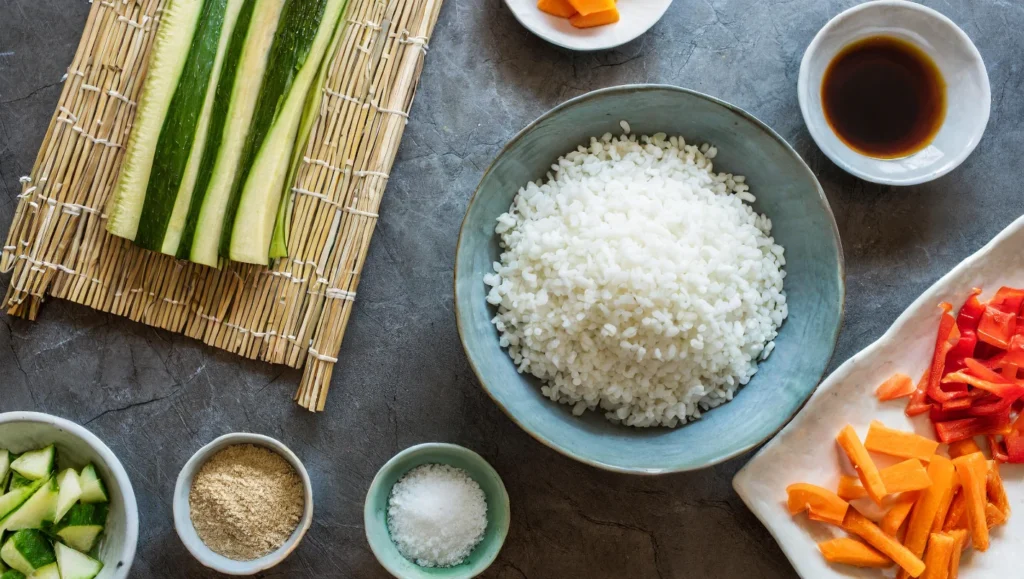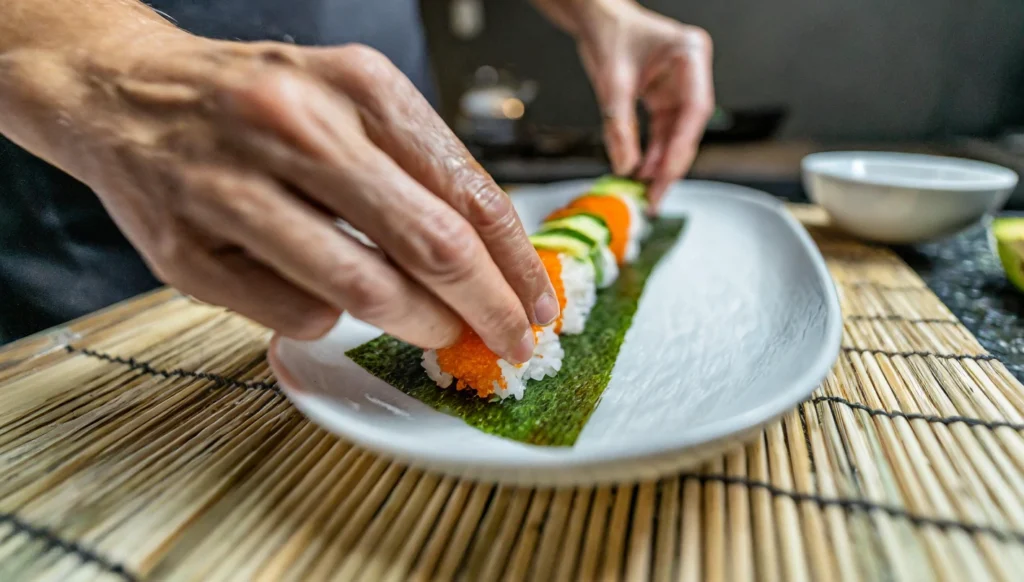
Introduction to Sushi Without Fish
Sushi, a global delicacy, is often synonymous with fish. However, sushi without fish is not only a concept but a growing trend among sushi enthusiasts and those with dietary restrictions. This movement towards fish-free sushi is not new but has gained prominence with the rise of vegetarianism, veganism, and concerns about seafood sustainability. Traditional sushi, with its origins in Southeast Asia and evolution in Japan, has always been about the delicate balance of flavors, and this dish adheres to this tradition by exploring plant-based alternatives.
Why Choose Fish-Free Sushi?
The choice to explore sushi without fish stems from various reasons, ranging from personal health to ethical considerations. Maki Maki Sushi offer a guide to creating delightful sushi that foregoes fish but not flavor, appealing to a broad audience seeking healthier dietary options. Furthermore, the environmental impacts of fishing, highlighted by resources like Sustainable Eating, underscore the urgency of reducing our reliance on seafood. Ethical concerns regarding animal welfare also drive interest in fish-free sushi, presenting an opportunity for sushi lovers to enjoy their favorite dish without compromising their values.
Popular Types of Sushi Without Fish
Sushi without fish encompasses a variety of ingredients, proving that sushi’s essence lies beyond its fish content. Vegetable and fruit options emerge as favorites, offering both traditional and innovative takes on sushi. Examples include:
- Avocado rolls: Creamy textures replacing fish.
- Cucumber rolls: A crunchy, refreshing option.
- Mango rolls: Sweet touches in a savory dish.
- Strawberry rolls: A surprising but delightful combination.
Mock fish and vegan sushi options, leveraging plant-based ingredients to mimic the texture and flavor of traditional seafood, further expand the repertoire of sushi without fish.
Preparing and Enjoying Sushi Without Fish

Ingredients and Preparation Techniques
Creating this recipe starts with selecting the right ingredients and mastering sushi-making techniques. The key to delicious vegan sushi lies in the quality and variety of ingredients used. Essential ingredients include:
- Sushi rice: The foundation of any sushi, its sticky texture holds the roll together.
- Nori sheets: These seaweed wraps are crucial for rolling sushi.
- Vegetables: Avocado, cucumber, bell peppers, and carrots are popular choices.
- Fruits: Mango, strawberries, and pineapple can add a sweet twist.
- Tofu and tempeh: Provide protein-packed alternatives to fish.
Preparation techniques involve cooking sushi rice to perfection, slicing vegetables and fruits thinly to fit into rolls, and mastering the rolling process with a bamboo mat. For detailed guidance, Plant-Based Sushi Ingredients offers a comprehensive look into sourcing and utilizing vegan sushi components.
Different Diets
Sushi without fish caters to a wide range of dietary preferences, including vegan, vegetarian, and gluten-free options. Ensuring that your sushi fits these dietary restrictions involves careful selection of ingredients, such as using tamari instead of traditional soy sauce for a gluten-free alternative. Allergy-friendly substitutions also play a crucial role in accommodating individual needs, making sushi a versatile dish for everyone.
Pairing and Serving Suggestions
Pairing and serving this dish involves creativity and attention to complementary flavors. Consider these suggestions for a complete dining experience:
- Complementary dishes: Serve sushi with miso soup, edamame, or a simple seaweed salad.
- Suggested sauces and condiments: Soy sauce (or tamari), wasabi, and pickled ginger are traditional. For something different, try a sweet chili sauce or a creamy avocado dip.
- Beverage pairings: Green tea is a classic choice, while sake or a light white wine can elevate the meal further.

Comprehensive FAQs Section
- What are the health benefits of eating sushi without fish? Eating this dish can lead to a lower intake of mercury and other contaminants found in seafood, while still providing a rich source of vitamins and minerals from plant-based ingredients.
- Can sushi still be considered authentic without fish? Yes, the essence of sushi lies in its preparation and presentation. Sushi without fish maintains these core principles, offering authentic experiences with alternative ingredients.
- How do I find high-quality ingredients for making sushi without fish at home? Exploring local Asian markets and health food stores can lead to discovering high-quality, authentic ingredients suited for vegan sushi. Online resources and guides can also provide valuable information on sourcing the best ingredients.
Conclusion
In wrapping up our exploration of this recipe, it’s clear that the culinary world offers endless possibilities for creativity and adaptation. Whether you’re catering to dietary preferences or simply looking to explore new flavors, sushi provides a versatile canvas for a variety of ingredients beyond traditional fish. From vibrant vegetable rolls to innovative fruit and mock fish options, there’s a sushi style to suit every palate.
For those interested in broadening their seafood horizons while still keeping within the realm of ethical and sustainable choices, exploring our other seafood recipes can be quite enlightening. Consider checking out our salmon belly recipes for dishes that are both delicious and responsibly sourced, or delve into the world of crustaceans with our crab brulee recipe, which offers another sophisticated option for seafood lovers.
By embracing the full spectrum of this dish and exploring other seafood delicacies, you can enrich your culinary experience and continue to enjoy the art of sushi in new and exciting ways. Happy cooking and dining!
